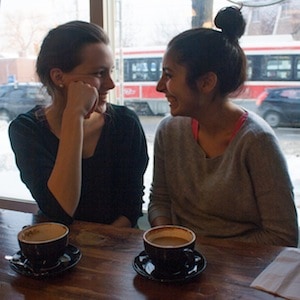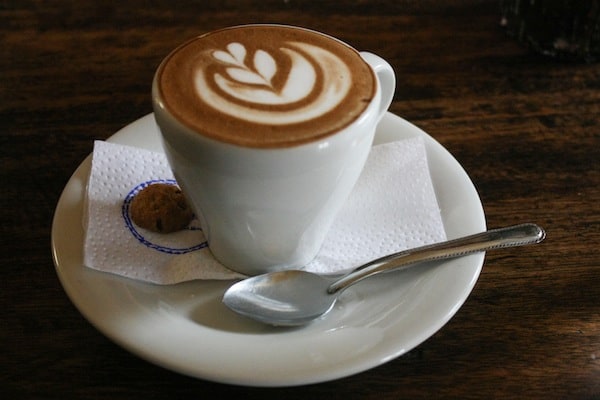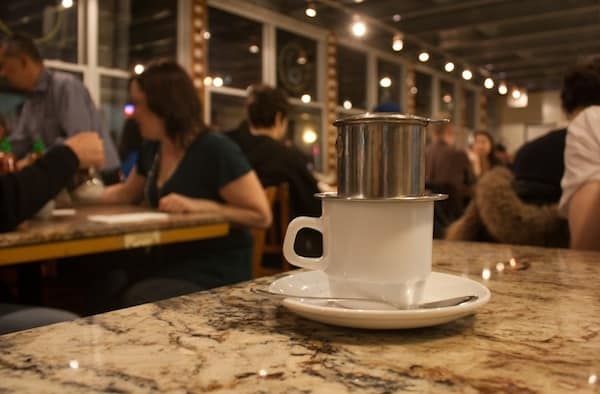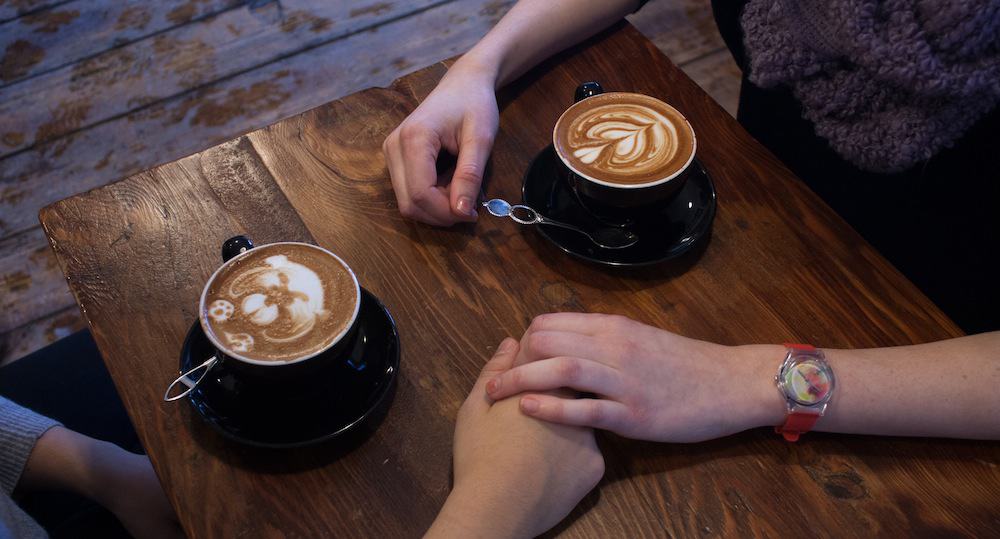Growing up, I came to understand that a relationship exists between coffee and the routine nature of adulthood. Most Saturday mornings, rather than watching cartoons, I would watch my mother prepare pots of the brewed beverage. Sometimes, I would help and, after a lot of persisting, I would even have a sip or two. I was an early adherent of caffeine, eagerly indulging in cup after cup by age six — provided it had copious amounts of sugar in it. I didn’t like the taste, but I loved drinking it.
At present, I’m not certain whether or not I’ve entered adulthood and settled into the comfort of routine just yet, but one thing remains the same: I still love coffee, only now without the milk and sugar. As I grew older, I graduated from standard grocery store drip coffee to the world of espresso-based options. Toronto is a food-and-drink playground for an aspiring coffee connoisseur like myself to explore. From the tasteless, free cups acquired from conference-hopping on campus to the sweet-smelling brew of an aging diner tucked next to a subway station, it seems that no two cups of coffee in the city are created equal.
A city in chains
 Earlier this year, an article titled “Why is Coffee in France La Merde?” (or, to translate, “Why is Coffee in France shit?”) was published in the online food and travel magazine Roads & Kingdoms. Writer Anna Brones described Paris as a “city of café culture, not a city of coffee culture.”
Earlier this year, an article titled “Why is Coffee in France La Merde?” (or, to translate, “Why is Coffee in France shit?”) was published in the online food and travel magazine Roads & Kingdoms. Writer Anna Brones described Paris as a “city of café culture, not a city of coffee culture.”
Toronto, unlike Paris, is a “coffee city,” though perhaps not in the sense that Brones meant. The two largest coffee chains in Canada, Tim Hortons and Second Cup, were a part of Canada’s food and beverage landscape long before espresso bars and latté art became the norm. These chains serve customers interested in grabbing a coffee for the road, rather than those looking to sit down in a café.
Within a five minute walk of Bloor and Spadina, there are three Second Cup locations. The decision to crowd this intersection with three of the same shops is strategic; it’s a busy corner, with U of T sitting southeast and the Spadina interchange subway station producing heavy foot traffic.
Chain coffee shops such as these replicate your experience each time you visit. You can order the same oversized croissant at whichever Second Cup location you choose; your double-double or your triple venti americano misto likely tastes the same each time you order it, no matter which location it comes from. The décor, coffee, and the prices are consistent at each, as is the lingo. The double-double, for example, is exclusive language to Tim Hortons customers, similar to the contentious tall, grandé, and venti sizing system of Starbucks.
While the seats are ample at most Tim Hortons franchises, the overall atmosphere at our country’s largest coffee chain isn’t exactly the most inviting for traditional café-goers looking to sit and think or converse. There are signs everywhere reminding you not to overstay your welcome — so while you’re begrudgingly permitted to stay as long as there’s coffee in your cup, you really ought to leave once the last drop is gone.
When it comes to where to get your coffee at Bloor and Spadina, the question is really which Second Cup will be the least busy; the drink is the same at each, and the order is likely part of the consumer’s day-to-day routine. The citizens of the downtown core are certainly coffee people, but they’re looking for their brew to come quickly, reliably, and at a reasonable price. The results are crowded corners of chains that offer nothing new.
Becoming a café city

Taking your coffee to-go has gone from an alternative to the norm. Being on the go is a part of everyday life as we conform our eating and drinking habits to our busy schedules. Many independent coffee shops, however, offer the option to drink from a mug in a café, and stay as long as you like. Cafés are traditionally spaces of conversation and creativity, where artist-types can linger and work, and where friends can come and chat.
In the city centre, you are never more than a stone’s throw away from a better cup of coffee than one you might find in a nationwide chain. Trendy, independent cafés can be found on most blocks in the city, and serve patrons with a taste for gourmet brews and a comfortable seat to study in.
To stay competitive against the endless stream of Starbucks franchises that are springing up on every corner in Toronto (and just about everywhere else), smaller coffee shops innovate in their atmosphere and coffee options. Cafés offer cushy spaces to accommodate people looking to work or socialize, free wi-fi, treats baked in-store that easily rival those of well-known brands, and specialty drinks (though often at steep prices).
The Holy Oak Café in Brockton Village is one of the few local cafés in Toronto that stays open in the evening. Come 9:00 pm, the Macbooks are tucked away, the lights are dimmed, and a different drink replaces the coffee brew as the café transforms into a hip bar. Many independent coffee shops are similarly taking on multiple identities to broaden their appeal — as community-gathering spaces, galleries, and storefronts for independent artisans.
Independent cafés also stay relevant by offering a more all-encompassing coffee experience for their customers, as opposed to the quick-serve options of chains. Early Bird Espresso and Brew Bar on Queen West welcomes customers with its stock of intricate coffee equipment that resembles a chemistry lab. The siphon coffee maker that lines the bar tickles the fancy of coffee aficionados and instagram fiends alike.
Many people trade hot coffee for iced options in the summertime. Chain shops cash in on the cold-brewed trend with cups almost full of ice that limit the amount of mediocre coffee you actually get. Specialty cafés in Toronto serve cold-brewed coffee right, standing out from their competition by offering truly gourmet options in their drink menus. Dark Horse Espresso Bar on Spadina bottles its cold-brewed coffee for five dollars apiece — a premium price that’s certainly worth it for the strong flavour you get from the 16-to-18-hour steeped brew.
Ceremonious brews

There are a number of places in Toronto that make coffee in innovative ways that challenge our conception of the drink. At most Vietnamese restaurants, you are likely to find at least one or two tables with tall glasses filled with ice and capped off with a silver contraption that looks like a top-hat. This is the preparation process for a drink called ca phe sua da — Vietnamese iced coffee with milk. The coffee, when served black, tastes remarkably bitter. With the addition of condensed milk, however, the rich flavours of the brew are brought out, producing a slightly burnt, dark taste.
The Ethiopian coffee ceremony is the epitome of the “slow food” dining movement, which Ethiopian food is often considered to be a part of. You certainly cannot get your Ethiopian coffee to go, nor can you order it at the last minute, due to the time-consuming process of brewing it. The Ethiopian coffee ceremony is about the sacred experience of drinking coffee, and the senses and the sentimentality of each sip and smell.
Andrea, a third-year biology and environmental studies student, explains another coffee ritual from her home country of Sweden: fika, which simply translates to “coffee break.” Swedish fika involves taking a break from your working day and having a cup of coffee, sometimes accompanied by a light pastry.
According to Andrea, fika was an integral part of her experience growing up in Sweden. “Even as a kid, [you] would always have fika. It’s what you always do,” she says.
In keeping with the routine of “adulthood,” for me, drinking coffee has become a force of habit — a morning, afternoon, and even evening ritual I just can’t seem, or don’t care to, kick. A friend of mine recently summed up my sentiments in a tweet: “I don’t really want any more caffeine, but I just want the act of drinking coffee.”
For many young adults in Toronto, coffee is an embedded part of every busy day. To-go culture is an inevitable by-product of living in the city — but stopping at an independent coffee shop and saving some paper by taking a genuine coffee break is a productive way to enjoy your brew for its quality, rather than its caffeine alone. Coffee doesn’t have to be mere routine: it can be a ritual, a sensory experience to be savoured, a careless conversation with a friend, a clear-headed moment to yourself, or, for me, a memory of my mother on Saturday mornings.
By the cups
Espresso yourself
Espresso refers to a method of preparing coffee by shooting hot water through finely ground coffee beans. The result is a thick, foamy brew with a higher concentration of caffeine. Many specialty drinks have an espresso base.
Caffe Latte: foam, a lot of steamed milk, espresso
Cappuccino: a lot of foam, steamed milk, espresso
Mocha: foam, steamed milk, chocolate, espresso
Americano: water, espresso
Famous caffeine fiends
“I never laugh until I’ve had my coffee.” — Clark Gable
“I would rather suffer with coffee than be senseless.” — Napoleon Bonaparte
“I have measured out my life with coffee spoons.” — T.S. Elliot, “The Love Song of J. Alfred Prufrock”
“I’ve been drinking coffee for over 50 years. That it is poison, I am convinced, but its ill effects have yet to have any bearing on my health.” — Voltaire
“…If it weren’t for the coffee, I’d have no identifiable personality whatsoever.” — David Letterman
Around the world in 80 cups
— The people of Finland consume the most coffee in the world annually, at 12kg per person per year, followed by Norway, Denmark and the Netherlands respectively. Canadians consume about half that amount per year at 6.1 kg per person.
— Brazil produces the most coffee in the world at 54,500,000 bags per year, with each bag weighing 60 kg.


